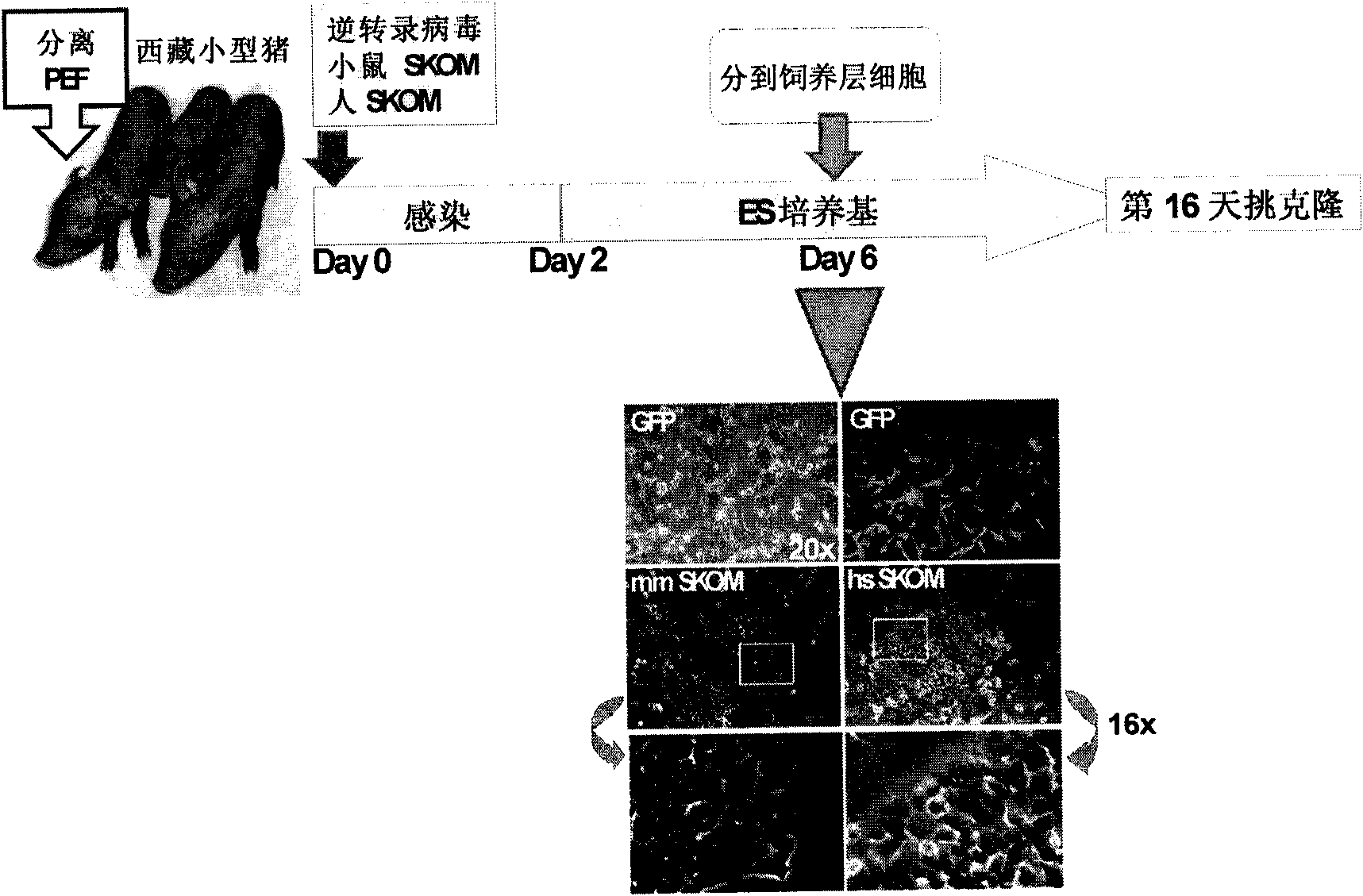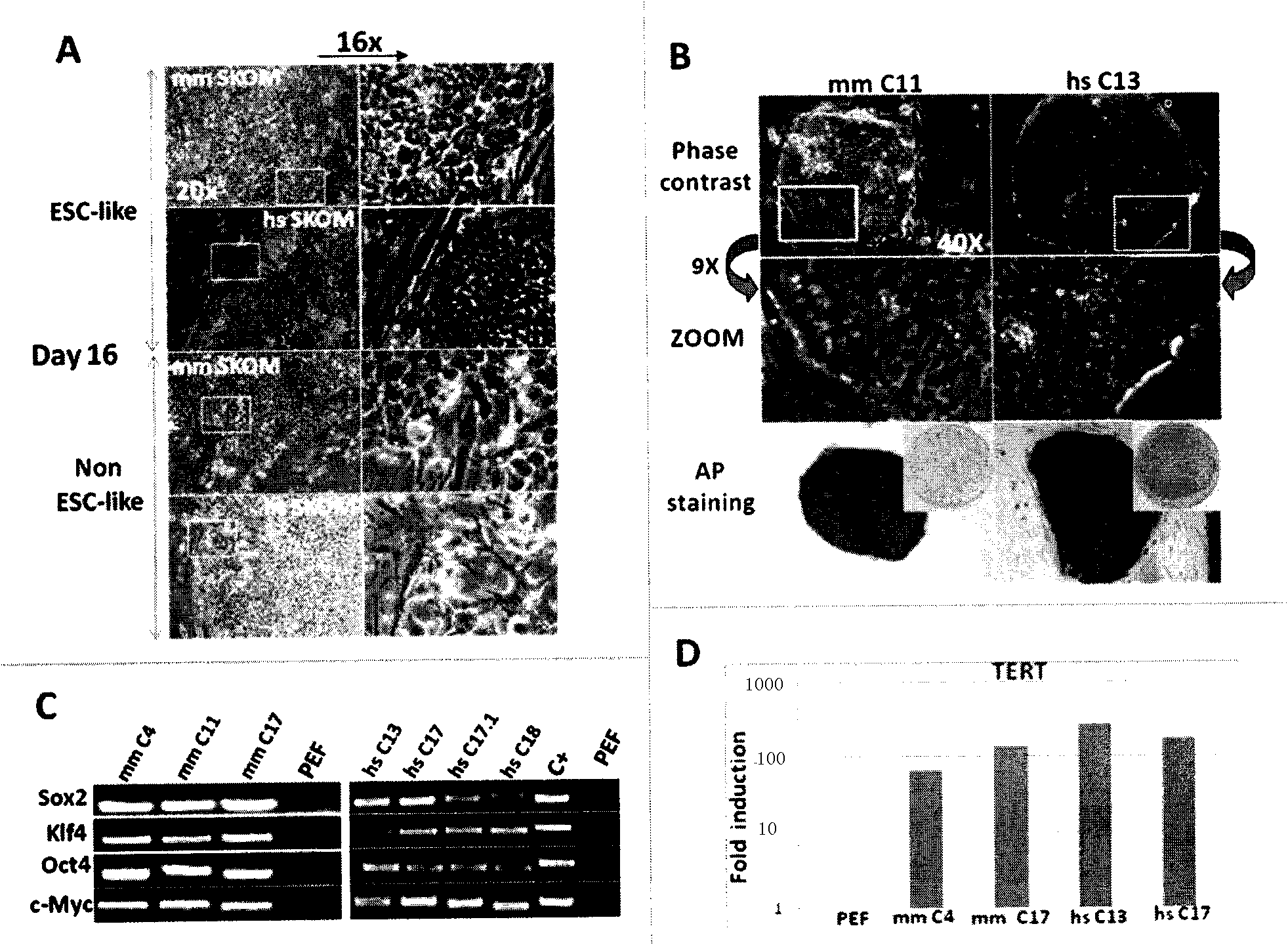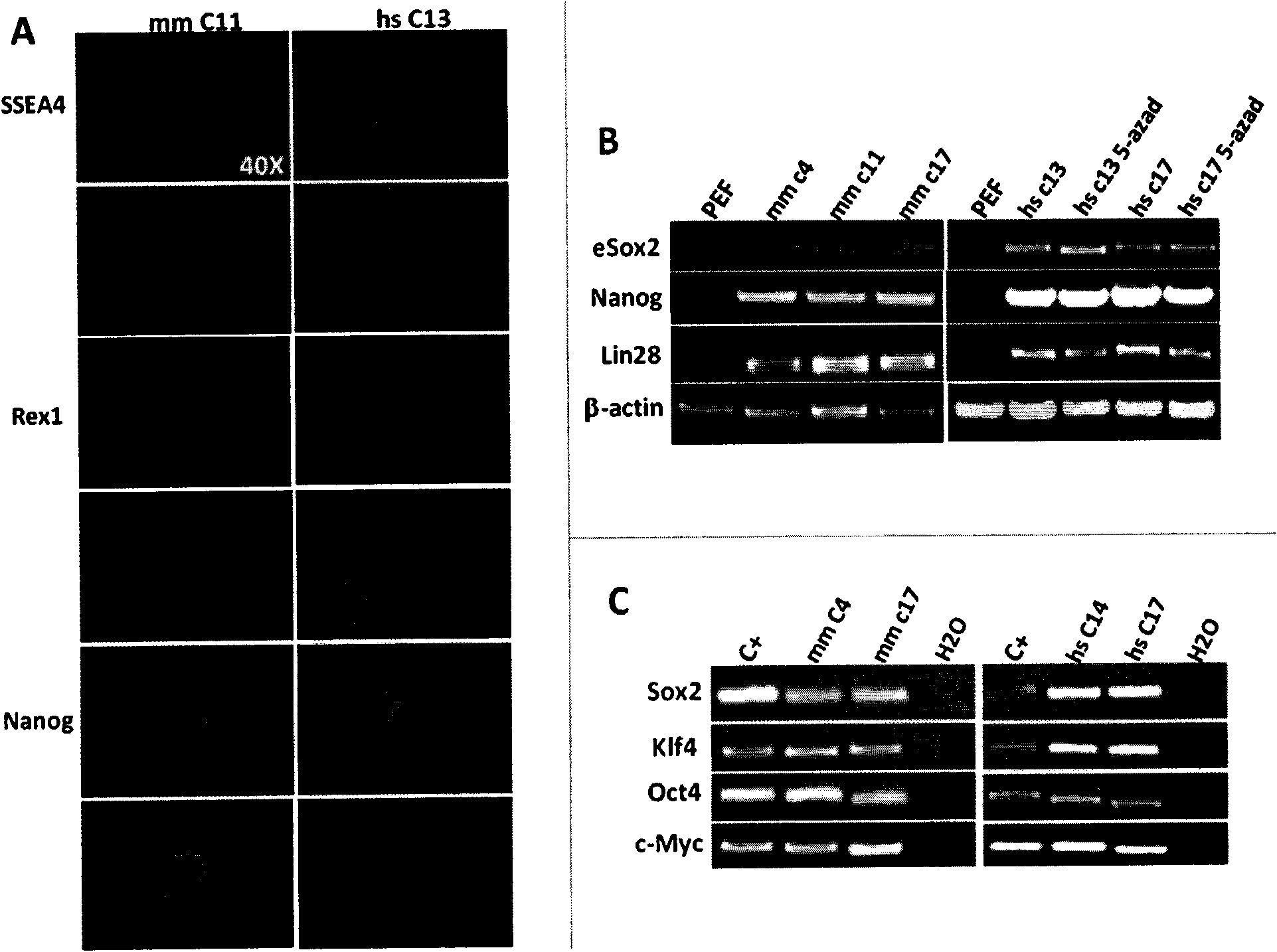Method for generating and inducing pluripotent stem cells by using pig fibroblasts
A technology for pluripotent stem cells and pig fibroblasts, which is applied in the field of pluripotent stem cells, can solve the problems of difficulty in feeding, development into tumors, and complicated nuclear transplantation operations, and achieves the effect of optimizing the iPS induction strategy and facilitating gene manipulation.
- Summary
- Abstract
- Description
- Claims
- Application Information
AI Technical Summary
Problems solved by technology
Method used
Image
Examples
Embodiment Construction
[0029] In order to make the present invention easier to understand, the present invention will be further described below in conjunction with specific examples. It should be understood that these examples are only used to illustrate the present invention and are not intended to limit the scope of the present invention.
[0030] The practice of the present invention will employ, unless otherwise indicated, conventional techniques of molecular biology, microbiology, cell biology, immunology and recombinant DNA, which are within the skill of the art. See, e.g., Sambrook, Fritsch, and Maniatis, A Laboratory Guide to Molecular Cloning, 3rd Edition (2002); CURRENT PROTOCOLSIN MOLECULAR BIOLOGY (eds. F.M. Ausubel et al. (1987)); SERIES METHODS INENZYMOLOGY (Academic Press, Inc.): PCR 2: A PRACTICAL APPROACH (M.J.MacPherson, B.D.Hames and G.R.Taylor, (1995)), Harlow and Lane, (1988) ANTIBODIES, A LABORATORY MANUAL and ANIMAL CELLCULTURE (R.I.Freshney, (1987)); W.French Anderson et al....
PUM
 Login to View More
Login to View More Abstract
Description
Claims
Application Information
 Login to View More
Login to View More - R&D
- Intellectual Property
- Life Sciences
- Materials
- Tech Scout
- Unparalleled Data Quality
- Higher Quality Content
- 60% Fewer Hallucinations
Browse by: Latest US Patents, China's latest patents, Technical Efficacy Thesaurus, Application Domain, Technology Topic, Popular Technical Reports.
© 2025 PatSnap. All rights reserved.Legal|Privacy policy|Modern Slavery Act Transparency Statement|Sitemap|About US| Contact US: help@patsnap.com



